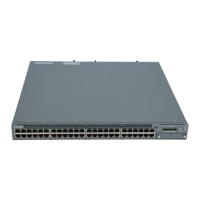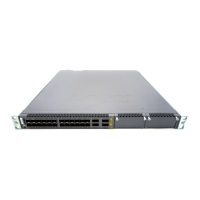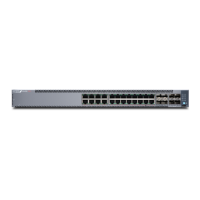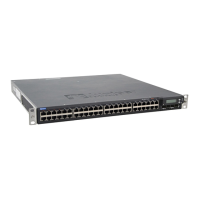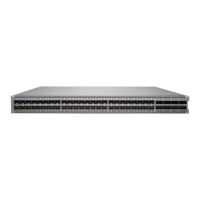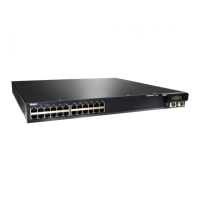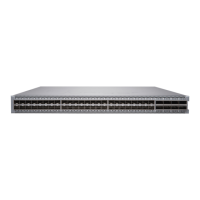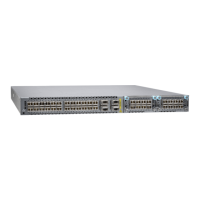5. Remove the terminal block cover. The terminal block cover is a piece of clear plastic
that snaps into place over the terminal block.
6. Remove the screws on the terminals using the screwdriver. Save the screws.
WARNING: Ensure that the power cables do not block access to switch
components or drape where people can trip on them.
7. Connect each power supply to the power source. Secure power source cables to the
power supplies by screwing the ring lugs attached to the cables to the appropriate
terminals by using the screw from the terminals (see Figure 45 on page 168 and
Figure 46 on page 168).
NOTE: The DC power supply has four input terminals labeled V+, V+, V–,
and V– for connecting DC power source cables labeled positive (+) and
negative (–). The V+ terminals are shunted internally together, as are the
V– terminals to provide parallel current path. The same polarity input
terminals can be connectedwith thesame source to provide an additional
current path in a higher power chassis. Each power supply must be
connected to a single source only.
a. Secure the ring lug of the positive (+) DC power source cable to the V+ terminal
on the DC power supply.
b. Secure the ring lug of the negative (–) DC power source cable to the V– terminal
on the DC power supply.
c. Tighten the screws on the power supply terminals until snug using the screwdriver.
Do not overtighten—apply between 5 in-lb (0.56 Nm) and 6 in-lb (0.68 Nm) of
torque to the screws.
167Copyright © 2015, Juniper Networks, Inc.
Chapter 13: Connecting the Switch to Power
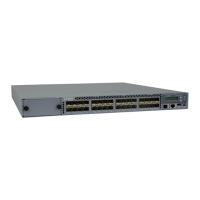
